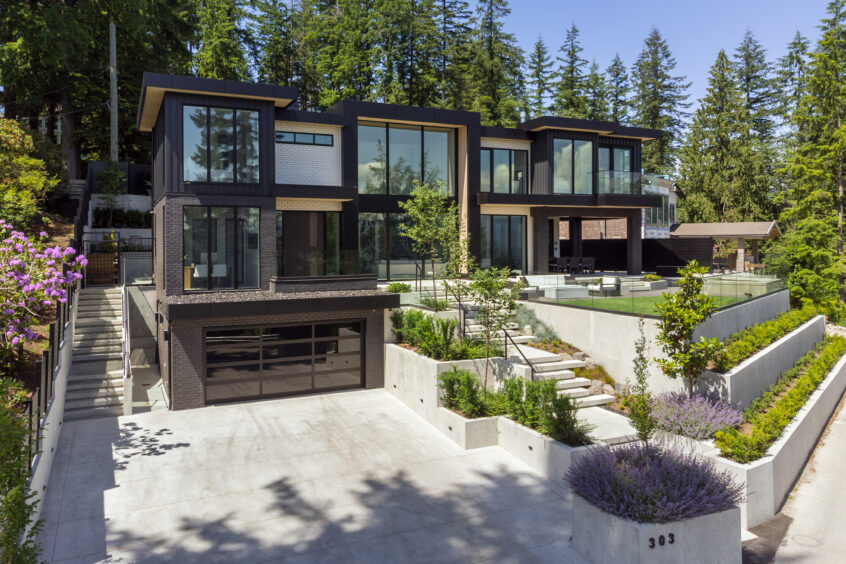Innovation is essential in the field of architecture and design if we are to turn everyday structures into spectacular pieces of art. Composite cladding systems are one such breakthrough that has completely revolutionized the building sector. These cutting-edge composite metal cladding panels are revolutionizing how buildings are conceived and built thanks to their sleek, contemporary appearance.
What are composite cladding systems actually, and what mysteries do they conceal? We will dig into the realm of composite cladding in this post and examine its special qualities, advantages, and uses.
Composite metal cladding systems provide a variety of benefits that make them a great choice for architects and developers alike, from increasing the appearance of commercial buildings to boosting energy efficiency and durability. Discover how composite cladding systems are changing the look of modern architecture as we reveal the mysteries of these systems.
What is Composite Cladding?
A type of cladding system called composite cladding mixes many materials to produce a single, high-performance panel. It normally comprises a core substance that offers insulation and structural stability, two outer layers consisting of metal, usually steel or aluminum, and a core material. When these materials are combined, a lightweight panel that is also sturdy and long-lasting is produced, which may be utilized to cover building external walls.
One of the main qualities of composite cladding is its versatility. It may be produced in a variety of shapes, sizes, and colors, allowing architects and designers to create unique and beautiful facades.
The panels may be arranged in any way, including vertically, horizontally, or diagonally, allowing designers to try out various patterns and textures. Furthermore, composite cladding is simple to cut and shape to fit windows, doors, and other architectural elements, improving the building’s overall design.
The weather resilience of composite metal cladding panels is another benefit. The structure is kept well-insulated and weatherproof thanks to the protective barrier that the outside metal layers offer against rain, wind, and UV rays. This prolongs the building’s lifespan and contributes to the upkeep of a comfortable internal atmosphere while also lowering the frequency of expensive repairs and maintenance.
Another benefit of composite cladding is that it resists fire. These panels frequently have non-combustible core materials like mineral wool or flame-resistant polymers. Due to this, composite cladding is a fantastic option for structures like high-rise residences, hospitals, and schools where fire safety is of utmost importance.
The use of recycled materials in many composite cladding systems lowers the need for new resources and reduces waste. Additionally, the insulating qualities of composite cladding panels can assist to increase a building’s energy efficiency, minimizing heating and cooling expenses as well as carbon emissions.
Environmental Sustainability of Composite Cladding
Sustainability is a crucial factor in building design and construction in today’s ecologically concerned society. For architects, developers, and building owners, composite cladding systems are a sustainable option because of their numerous environmental benefits.
The utilization of recycled materials in composite cladding is one of its key environmental advantages. In order to cut down on waste and the need for new resources, many composite cladding panels are constructed from recycled metals like aluminum or steel. Architects and developers may support the circular economy and lessen their carbon impact by employing recycled materials.
Composite cladding can aid in increasing a building’s energy efficiency. These panels’ insulating capabilities lessen heat absorption in the summer and heat loss in the winter, lowering the need for heating and cooling systems. Buildings become more ecologically friendly as a result of reduced carbon emissions and energy use.
Additionally, composite cladding systems are long-lasting and durable, which decreases the need for regular replacements or repairs. This decreases the environmental effect of the manufacture and disposal of building materials in addition to saving money. Additionally, composite cladding’s minimal maintenance needs, which minimize the need for harsh cleaning agents and save water usage, further contribute to its sustainability.
Overall, composite metal cladding panels offer a sustainable alternative to traditional cladding materials. By choosing composite cladding, architects and developers can create buildings that are not only visually appealing but also environmentally friendly, contributing to a greener future.
Conclusion
Modern architecture is changing due to the unique design, robustness, and environmental sustainability of composite cladding systems. These cladding panels have several advantages for architects and developers, including improving the appearance of commercial buildings, increasing energy efficiency, and lowering maintenance expenses. Composite cladding systems have grown in popularity as a result of their adaptability and distinctive qualities, which enable architects to design visually stunning and environmentally friendly structures. Composite cladding will probably have a big impact on the future of architecture as long as the building industry continues to value innovation and sustainability. We may anticipate seeing even more spectacular composite cladding systems that push the boundaries of design and performance thanks to continual improvements in materials and production processes.

